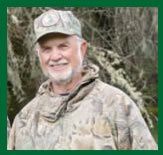Fall Turkey
by Terry Knight
The California wild turkey fall season opens on
November 13 and when it comes to upland game
hunting the fall turkey season ranks near the bottom
in popularity.  The reason being that quail, duck and
pheasant seasons are in full swing and few hunters even
give turkeys a second glance. This is a big mistake. Fall
turkey hunting can be just as exciting and rewarding
as any other hunting sport and the best part is there is
practically no hunting pressure. Wilderness Unlimited
will open several properties to fall turkey hunting and
the hunting should be excellent.
The reason being that quail, duck and
pheasant seasons are in full swing and few hunters even
give turkeys a second glance. This is a big mistake. Fall
turkey hunting can be just as exciting and rewarding
as any other hunting sport and the best part is there is
practically no hunting pressure. Wilderness Unlimited
will open several properties to fall turkey hunting and
the hunting should be excellent.
It’s true that different tactics are used from spring hunting but the turkeys themselves are just as wary and it takes good calling and a lot of skill to get within shooting range. The good news is that during the fall season the hunting hours are from one-half hour before sunrise until sunset plus it’s an either sex hunt.
Wild turkeys behave differently during the fall season than in the spring. Whereas in the spring a typical flock of turkeys will be 6-10 birds, in the fall the flocks merge and it’s not unusual for there to be 50 or more birds in a flock. Typically the hens and young birds will be in one flock and the older toms will be in another. Most of the birds bagged by hunters during the fall season will be either hens or young jakes, although it is possible to bag an old gobbler.
Turkey are very vocal during the fall and calling is still the primary method of luring in a turkey during the fall season. However, most of the calls are soft yelps or a whistle called the kee-kee run. In other words it doesn’t take an expert caller to lure in a turkey, it just takes a lot of patience.
During the fall, turkeys spend most of the day feeding which includes looking for bugs, seeds, acorns and other material. The flock tends to move in the same direction. They can also cover a lot of ground in a short time. One successful method is to try and get ahead of the feeding flock. Set up against a tree and start making a series of soft yelps.
One advantage that fall turkey hunters have is that they can hunt until sunset and that last hour of shooting time can be very effective. Turkeys will fly to the roost tree just before dark. Normally late in the afternoon a flock will meander towards the roost tree and then assemble just before they fly up.
Locate the roost tree and set up about 50 yards away. As the birds approach, make a few soft clucks and putts. Often this will draw a bird or two to you. Roost trees can be identified by feathers and droppings at the base of the tree. Unless disturbed, turkeys will generally use the same tree over and over again. Setting up near a roost tree can also be productive for hunting at daylight.
Hunting fall turkeys with a bow is gaining in popularity. Often you will call in several birds and you have your pick of which bird to shoot. Most of the experienced bowmen use a blind and a few even use decoys. An old hen or young jake will respond to a decoy. When setting up a blind find out the travel pattern of the turkeys and put the blind to intersect them.
When it comes to selecting a call for fall turkey hunting, the box call is far and away the easiest to use. However, many of the experienced hunters prefer a diaphragm call.
The fall season runs through Nov. 21 and the limit is one bird of either sex for the season.
